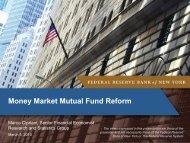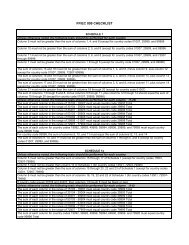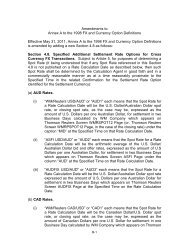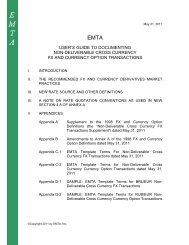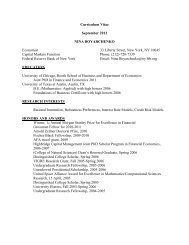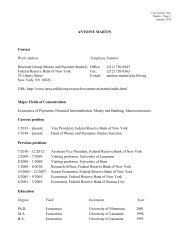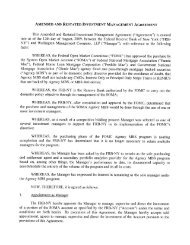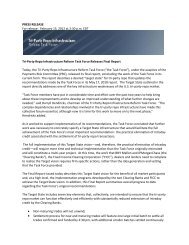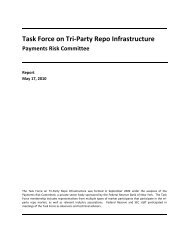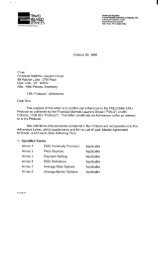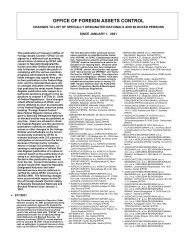Residential Foreclosures in the City of Buffalo, 1990-2000 - Federal ...
Residential Foreclosures in the City of Buffalo, 1990-2000 - Federal ...
Residential Foreclosures in the City of Buffalo, 1990-2000 - Federal ...
You also want an ePaper? Increase the reach of your titles
YUMPU automatically turns print PDFs into web optimized ePapers that Google loves.
Table 17<br />
Median Loan Amounts<br />
Community<br />
Percentage <strong>of</strong><br />
Judgment to Loan<br />
Amount<br />
East Delavan 107<br />
East Side 110<br />
Ellicott-Masten 110<br />
North <strong>Buffalo</strong>-Elmwood 103<br />
North East 109<br />
Riverside 107<br />
South <strong>Buffalo</strong>-River 104<br />
West Side 105<br />
<strong>Buffalo</strong> total 107<br />
Sources: Erie County Civil Court records;<br />
author's calculations.<br />
Perhaps <strong>the</strong> best <strong>in</strong>dicator <strong>of</strong> <strong>the</strong> forces that triggered <strong>Buffalo</strong> foreclosures <strong>in</strong> <strong>2000</strong><br />
is <strong>the</strong> ratio <strong>of</strong> judgment amounts to current assessed values. While homeowners may have<br />
become del<strong>in</strong>quent on <strong>the</strong>ir mortgage payments for any number <strong>of</strong> reasons, many faced a<br />
similar predicament once <strong>the</strong>y were <strong>in</strong>to <strong>the</strong> foreclosure process: <strong>the</strong>ir homes tended to be<br />
worth significantly less than <strong>the</strong> rema<strong>in</strong><strong>in</strong>g balance on <strong>the</strong>ir mortgage loans. For <strong>Buffalo</strong><br />
overall, <strong>the</strong> judgment amount was 119 percent <strong>of</strong> current assessed value, suggest<strong>in</strong>g that<br />
<strong>the</strong> typical <strong>Buffalo</strong> homeowner owed about 20 percent more on his or her mortgage loan<br />
than <strong>the</strong> current value <strong>of</strong> <strong>the</strong> home. Thus, a large proportion <strong>of</strong> distressed homeowners<br />
would have been unable to prevent foreclosure through <strong>the</strong> sale <strong>of</strong> <strong>the</strong>ir property. At <strong>the</strong><br />
same time, homeowners faced with such circumstances might have had little <strong>in</strong>centive to<br />
work out an alternative to foreclosure even if <strong>the</strong>y could.<br />
<strong>Buffalo</strong>’s high ratio <strong>of</strong> judgment amounts to current assessed values--here<strong>in</strong>after<br />
referred to as <strong>the</strong> judgment-to-value ratio--could be <strong>the</strong> result <strong>of</strong> several factors. Without<br />
question, a lead<strong>in</strong>g contributor is <strong>the</strong> decl<strong>in</strong>e <strong>in</strong> home prices <strong>in</strong> <strong>the</strong> city. As mentioned<br />
earlier, <strong>Buffalo</strong>’s median home price dropped 13 percent from 1998 to 2002. Thus, it is<br />
likely that a significant number <strong>of</strong> city homeowners watched <strong>the</strong> value <strong>of</strong> <strong>the</strong>ir home s<strong>in</strong>k<br />
below <strong>the</strong>ir loan pr<strong>in</strong>cipal <strong>in</strong> a short time. But o<strong>the</strong>r factors could also be responsible for<br />
<strong>the</strong> excessive judgment-to-value ratio. Some homes, for example, might have received<br />
erroneous assessments at <strong>the</strong> time <strong>of</strong> purchase. Such assessments have resulted <strong>in</strong><br />
60



